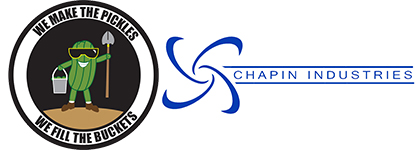Basic Concepts in Soilless Agriculture
What are some alternative, sustainable systems that can be used for agriculture? These systems are referred to as hydroponics, which includes many different soilless systems that use nutrient water to grow plants, often with less space or at least more efficiently than with traditional soil-based agriculture. What are some of these?
Eb and Flow
This method involves periodically flooding a small area where plants are growing and then to drain that back into a reservoir, repeating the process. The obvious advantage to this is water conservation. Often this process is best for plants that are able to go in between flooding periods and dry periods. A system like this can also be stacked vertically, saving space.

Deep water culture
DWC, is a method for having a reservoir of water with the plants floating on top, for example using Styrofoam or some other medium that can float. The advantage to this is that it could be combined with fish to create a cyclical, self-sustaining system. In addition, it can be simple, requiring no pumps, timers or other electronic equipment. This is good when working with plants that require constant moister and a lot of nutrients. An example would be fruit bearing plants/flowering plants. An example system would look like this

Here is a system that was built as part of Pickle Factory research using a similar method,

System is stacked to save space and uses a pump to push the reservoir from the bottom to the top. At that point, as the pump runs, it flows to the lower containers and then back into the revisor. It is only necessary to measure the reservoir.

Since it was designed to grow inside, there were grow lights of sufficient power to grow the plants.
Nutrient film technique
This technique uses gravity to create a small, constantly flowing current of water with nutrients. The plants are exposed to the flow of water through their roots, which are mostly exposed to the air and are exposed to the water with the root tips. This system usually requires a pump to push it to the top. A sample system would look like this

Low pressure Aeroponics
The most common form of these types of systems is a tower. A pump pushes water to the top and it drips down the inside of the tower, mixing in oxygen with the nutrient laden water. These systems scale well since they are designed to be vertical. They excel growing outside as well as inside. The best plants for these are smaller plants and flowering plants, for example cucumber, tomato, lettuce and so on. Here is what such a system would look like


High Pressure Aeroponics
Similar concept to the low-pressure variant, however, this type uses high pressure nozzles to atomize the nutrient water and spray onto the roots. The primary advantage to this is that it conserves the most water of any of the systems and when properly tuned, can grow them the fastest. This type of tech is even used in NASA research, where experiments are conducted using high pressure, since water conservation (weight, space) is critical.

Aquaponics
The final example is when using one of the hydroponic systems and then coupling it with aquaculture to create a self-sustaining system. The most common one to use is deep water culture or eb and flow. This system consists of a fish tank, where the fish will generate waste which goes through several filters to get processed into nutrient for the plants. At that point it is pump to the plant in the case of eb and flow, or it is simply in the water already in the case of deep water culture. Below is an example of what that would look like

One of the filters. It uses bacteria to break down and process the fish waste.

As part of research into this, we found that there are several calculations that one can make that helps to accurately determine the number of fish needed, how long they live and how many plants of what type can be sustained. More on this in future articles. The main challenge with this type Is that there are several variables and if any of them are off the mark for a given period of time, the fish die and so do the plants. This is definitely a system that is a prime candidate for computer automation.
There are several systems available, that all could very easily and cost effectively replace traditional mono culture. From going vertical to preserve space, growing inside to negating the need for pesticides and automation, this is definitely a concept to pursue. We will be posting more technically oriented articles, videos and images over the coming months!


